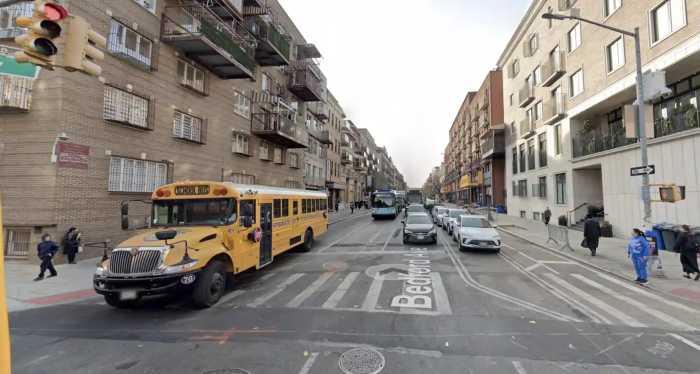Those on the front lines of the curb cut wars are pleased that the Department of City Planning (DCP) is trying to eliminate loopholes in the city’s zoning text that allow noncontextual driveways to be constructed in front of attached homes in areas where they were supposed to be prohibited.
Yet, if the reaction of members of Community Board 10 is any indication, DCP hasn’t yet quite done the job it has set out to do.
While the agency’s Residential Streetscape Preservation Text Amendment is not yet ready for prime time, a preliminary version of it has been vetted by board members who say they find it insufficiently precise.
“It doesn’t seem to do the trick,” noted Joanne Seminara, the chairperson of CB 10’s Zoning and Land Use Committee, during the board’s October meeting, which was held at the Knights of Columbus hall, 13th Avenue and 86th Street. “We believe that the proposal, as written, does not contain precise enough language to describe what it allegedly seeks to prohibit. We are very concerned that they are wasting time changing the statute with words that don’t clear it up.”
And, making sure it is precise is board members’ stated goal. They have been battling for over a year against the creation of a parking pad in front of one of a row of attached homes on 70th Street in Dyker Heights, an area where the zoning was believed to prohibit it.
When board members protested that the homeowner should not have been granted a permit, because the parking pad was prohibited by the area’s new zoning, the city rejoined that, while front yard parking in front of detached homes could not be created under the new zoning, the parking pad in front of the attached home was legal, because the zoning allowed it to be carved out of the home’s “side lot ribbon,” a bit of a stumper since an attached home has no side lot.
The amendment’s purpose, according to information provided by DCP to the borough president’s office, which forwarded it to CB 10, is to “prohibit new parking spaces in front of”attached or semi-detached homes in a variety of low density residential districts in which detached homes predominate, as well as within designated rowhouse districts.
Current zoning regulations, according to the information supplied by DCP, “permit new parking spaces for older, ‘non-conforming’ residences to be located directly in front of the attached or semi-detached house” in low density residential districts, as well as in front of existing homes in rowhouse districts, where they would be prohibited in front of new construction.
But, said Seminara, the Zoning Committee believes that DCP should “amend the text to prohibit all front yard parking and, in particular, in that portion of a side lot ribbon that lies in a front yard, that is, between a building wall and the front lot line.”
Board members agreed, voting overwhelmingly to send a letter to DCP, with copies to elected officials representing the area, recommending that the language of the text amendment be altered as the Zoning Committee had proposed.
Besides dealing with the loopholes relating to the creation of parking pads, the text change would, “strengthen the front yard planting requirements adopted last year by eliminating loopholes that allow the required planting to be located in driveways or in excessively narrow strips where the plants have little chance of survival,” according to DCP.






















